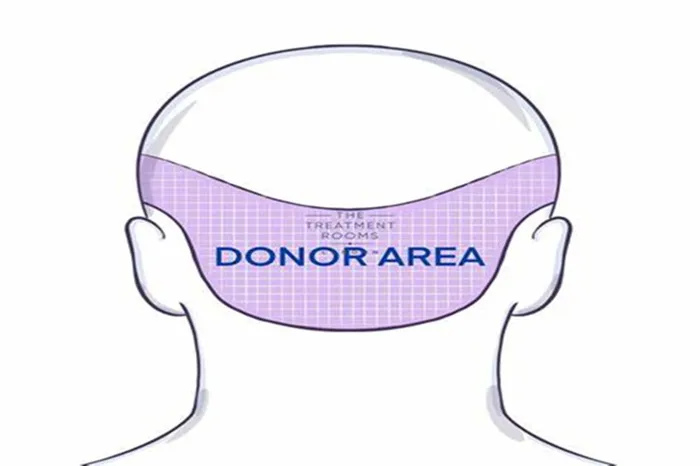Hair loss can significantly impact a person’s self – confidence and overall well – being. Hair transplantation has emerged as a popular solution, offering a chance to restore hair and enhance one’s appearance. When undergoing a hair transplant, patients often have numerous questions, and one of the most common queries is about the healing time of the donor area. Understanding how long it takes for this area to heal is essential for patients to manage their expectations and ensure proper post – operative care.
In this comprehensive article, we will explore the healing process of the donor area in hair transplant procedures, taking into account different techniques, individual factors, and best practices for optimal recovery.
The Basics of Hair Transplant Procedures
Before delving into the healing time of the donor area, it’s important to understand the two primary hair transplant techniques: Follicular Unit Transplantation (FUT) and Follicular Unit Extraction (FUE).
Unit Transplantation (FUT)
FUT, also known as the strip method, involves surgically removing a strip of skin from the back or sides of the head. These follicular units are transplanted into the recipient area, where hair loss has occurred.
Follicular Unit Extraction (FUE)
FUE is a more recent hair transplant technique that involves extracting individual follicular units directly from the donor area. A special tool, typically a punch, is used to remove each follicular unit. The advantage of FUE is that it leaves smaller, less visible scars compared to FUT.
Typical Donor Area Healing Timeline
First Week: Immediate Post-Operative Care
Pain and Discomfort: During the first week, mild pain, swelling, and tenderness are common. Your surgeon may prescribe pain relievers and recommend gentle care to ease discomfort.
Scabbing: Small scabs will form over the donor area as part of the healing process. Avoid picking or scratching them, as this can increase the risk of infection and affect the final appearance.
Hygiene and Aftercare: Keeping the area clean is crucial. Use the prescribed saline washes or gentle cleansers, and follow your surgeon’s post-op instructions to promote optimal healing.
Weeks 2–4: Early Recovery Phase
Swelling and Redness: While the swelling typically subsides within this period, some redness may persist. This lingering redness is a normal part of the healing process and will gradually fade.
Natural Scab Shedding: Most scabs begin to fall off during this period. During this period, most fall off naturally without interference to avoid any disruption to the healing tissue.
Hair Follicle Adjustment: The transplanted follicles start to settle into their new position, laying the groundwork for healthy hair growth in both the donor and recipient areas.
Months 1–3: Intermediate Healing
Early Hair Growth: New hair may start to emerge during this period. Although it might initially appear thin and less dense, this is an early sign of successful healing and follicle integration.
Donor Area Integration: As healing progresses, the donor area gradually blends with the surrounding scalp. Any extraction marks become less noticeable, contributing to a natural appearance.
Month 3 and Beyond: Final Results
Permanent Hair Growth: By the three-month mark and beyond,
the transplanted hair continues to mature, resulting in a fuller, more natural look.
Minimal Scarring: With proper healing and care, the donor area should exhibit minimal scarring, making it hard to distinguish from the rest of your scalp.
Factors Affecting the Healing Time of the Donor Area
Surgical Technique
The choice of hair transplant technique can significantly impact the healing time of the donor area. FUT, with its larger incision and linear scar, generally takes longer to heal compared to FUE. The sutures used in FUT also require additional care and monitoring. In contrast, FUE, with its smaller puncture wounds, has a shorter initial healing time and a lower risk of visible scarring.
Surgeon Experience
The skill and experience of the surgeon performing the hair transplant procedure play a crucial role in the healing process. An experienced surgeon will be able to perform the procedure with precision, minimizing damage to the surrounding tissues and hair follicles. This can lead to faster healing and a lower risk of complications.
Individual Factors
Each patient’s body heals at a different rate, and several individual factors can influence the healing time of the donor area.
Age: Generally, younger patients tend to heal faster than older patients.This is because younger individuals have a higher rate of cell turnover and a more efficient immune system.
Overall Health: Patients who are in good overall health, with no underlying medical conditions, are more likely to experience a faster and smoother healing process.
Smoking: Smoking is known to constrict blood vessels, reducing the blood flow to the healing area. Patients who smoke are advised to quit smoking before and after the hair transplant procedure to promote optimal healing.
Medications: Certain medications can increase the risk of bleeding and delay the healing process. Patients should inform their surgeon about all the medications they are taking, including over – the – counter drugs and supplements.
Conclusion
The healing time of the donor area in hair transplant procedures can vary depending on several factors, including the type of technique used, the skill of the surgeon, and individual patient characteristics. By understanding the healing process and following the surgeon’s instructions for post – operative care, patients can minimize the risk of complications and promote optimal healing. Whether undergoing an FUT or FUE procedure, it’s important to be patient and allow the body sufficient time to recover. With proper care and monitoring, the donor area should heal successfully, allowing patients to enjoy the results of their hair transplant and regain their confidence.
Related topics:
- How Long Does It Take Hair to Grow After a Transplant?
- How Long Does It Take for the Donor Area to Grow Back?
- Does Hair Grow Back in the Donor Area After a Hair Transplant?


